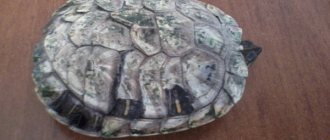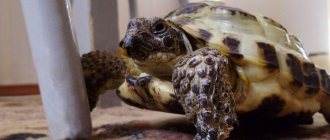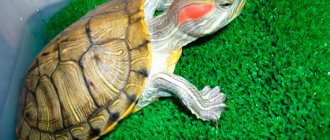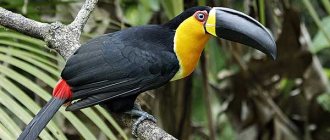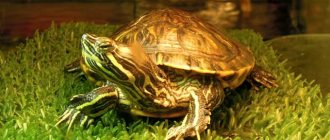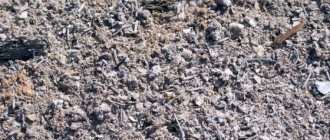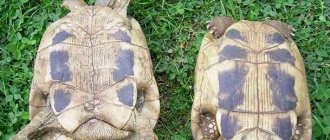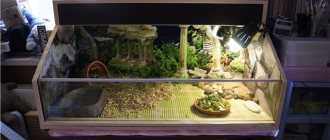Turtles can be ruthless predators
Look
One of the fierce species is the snapping turtle. It can reach a length of up to 1.5 meters and weigh up to 60 kilograms. She has powerful jaws, a hooked beak, huge bear claws and a powerful tail. It lures its victims (sometimes it can even be other turtles) by moving its tongue, which is very reminiscent of a large seductive worm.
Can a turtle survive without a shell?
Since the shell is fused with the vertebrae and ribs of the reptile, the answer is obvious - a turtle without it is the same as a person without a spine.
But why are there so many photos in which turtles are completely alive and happy - a uniform gray color, clearly devoid of bone covering? The answer is simple - they have a shell, but it consists of skin , not as dense and powerful as bone, so one gets the feeling that it is not there. If you look at a photo of the skeleton of this reptile, you can clearly see that turtles have no muscles that support their backs, and the ribs and spine are tightly connected to the shell. Therefore, painless separation of this part of the body is out of the question!
Another thing is leatherback turtles. In appearance, they give the impression of being naked , devoid of bone cover.
Similar to them are soft-bodied species, the shell of which is hidden by skin in adulthood.
Turtles don't have vocal cords (but they can still make sounds)
Look
Most turtles make hissing sounds. Some, however, can also make sounds that resemble grunting, hooting, or even cackling. They do this by jerking their heads in a way that compresses the air in their lungs.
What does a turtle look like without a shell?
It was previously said that these reptiles cannot live without it. However, in some varieties it is so soft that it gives the impression of complete absence. These are primarily soft-bodied freshwater turtles , of which there are three species.
More common than others is the large soft-bodied turtle, which lives in southern latitudes: Indonesia, Papua New Guinea. It is distinguished by its impressive size (about a meter) and round shape. The skin, like the whole body, is light olive or gray in color. Therefore, the shell externally merges with the body, it seems as if it is not there. While in young turtles the shell is slightly rough and covered with small tubercles, in adults it is smooth and covered with skin. These turtles have a wide and short head ending in a small proboscis.
The largest representative of the “shellless” turtles is Kantori, reaching a weight of about 50 kilograms and a two-meter length. It lives in warm countries: Thailand, Vietnam, Philippines, India. Its shell is soft and smooth; adults may have small tubercles near the neck; young animals do not have them.
Thus, the soft shell is the same color as the surface of the body and gave rise to the myth that these turtles lack protection. However, despite the widespread dissemination of such photographs, a turtle cannot exist without an outer covering. But in the photo you can see what the reptiles look like, giving the impression of being “shellless.”
Soft-shelled turtles
Eastern Longneck
In the lakes of Africa and in some eastern regions of the United States you can find a turtle that has the longest neck of the entire turtle family.
From a distance it looks very much like a snake, if not for the shell. And she hunts like a snake, sharply straightening her neck towards the prey. It can also bite a person if it considers that he is dangerous.
These are relatively small beautiful turtles, adults of which do not exceed 10–15 centimeters in length.
10
What do turtles eat in the wild?
The diet of turtles directly depends on their species, habitat and lifestyle. Land turtles are practically vegetarians; their main food is tree branches, fruits and grass, mushrooms and vegetables. However, it was not in vain that we wrote practically, since in order to maintain the protein balance in their bodies, turtles can sometimes eat various small animals such as snails, slugs and worms. Land turtles also drink water with pleasure.
But sea and freshwater turtles are already real predators, since their diet includes various small fish,
frogs, snails, crustaceans (some sea turtles happily eat squid, cuttlefish and other shrimp). But the gastronomic preferences of aquatic turtles are not limited to living creatures; along with them, they also eat plant foods: algae.
Interesting fact, there are species of sea turtles that eat poisonous jellyfish. From such food, the meat of the turtles themselves, in turn, becomes poisonous, which scares potential predators away from them. This is a gastronomic remedy.
Does a turtle have teeth and how many?
- The turtle has no teeth. Chewing food is carried out using horny plates covering the inside of the mouth and pharynx. The textured coating easily handles hard products and grinds plant tubers and stems.
- Excessive salivation contributes to the formation of food lumps, which can remain in the mouth and esophagus for a long time. Promotion of food is carried out using a massive tongue. The limited functionality of the tongue does not allow it to stick out of the mouth.
- In some species of turtles, the tongue is covered with taste buds. Varieties that do not feel taste are less picky about food. Digestion of one turtle meal can take about a week. The functioning of the digestive tract depends on temperature conditions.
Without teeth
Habitat of red-eared turtles
Trachemys scripta's habitat is primarily southeastern America and the adjacent region of Mexico: from southwestern Virginia through Florida, Alabama, Mississippi, Louisiana and Texas to Mexico. To the north, the habitat extends to the ends of Kentucky, Tennessee, Ohio, Indiana, Illinois and Iowa, and to the west to Kansas, Oklahoma and New Mexico.
Red-eared slider sizes
Trachemys scripta elegans predominates predominantly in the western and central parts of this range. Occupying the Mississippi Valley from Illinois through eastern New Mexico west to the Gulf of Mexico.
Trachemys scripta scripta is predominant in the eastern part of its previously described range, ranging from southeastern Virginia to northern Florida. It should be noted here that an intergradation zone of Ts elegans and Ts scripta is formed in Alabama.
Trachemys scripta troostii has the smallest range of occurrence and is found in the upper Cumberland and Tennessee rivers. From southeastern Kentucky and southwestern Virginia through Tennessee to northeastern Alabama.
Trachemys scripta occurs in a wide range of freshwater habitats including rivers, ditches, swamps, lakes and ponds. Quiet reservoirs with a soft bottom and an abundance of aquatic vegetation.
What is a turtle shell made of?
Those who claim that a turtle without a shell can live absolutely calmly simply did not study well at school, or skipped biology classes. To be sure that this is not the case, let's look at the structure of the shell.
So, as already mentioned, the turtle’s house consists of two parts - lower and upper, fused together. Contrary to popular belief, Tortilla's shell is not solid, but consists of many skin and bone scutes. In total, the amphibian has from forty to sixty such plates. The seams of the internal bone plates and the external horny scutes do not match - this is what gives the shell its strength.
The turtle house grows centered, that is, new plates appear at the edges. In young amphibians, there are quite often individuals whose shell is open on the sides; they seem to be between two covers. Such turtles are very vulnerable, but over time the shell closes into strong, reliable armor.
Types of Softshell Turtles
In nature, there are turtles that live without a shell. Of course, it is there, it’s just that in its place there is gray dense skin. Numerous small spines may appear on the surface of the skin.
These reptiles are large in size and belong to the group of freshwater turtles. There are three types of soft-bodied reptiles:
Large softshell turtle
This species of reptile is distributed in the southern part of Papua New Guinea, as well as in the south of Irian Jaya in Indonesia.
Main features of the reptile:
- her carapace is round with a flattened structure;
- has large dimensions. The body length reaches 1 meter, and sometimes more;
- there are longitudinal stripes on the surface of the neck;
- in young animals, the carapace has medium roughness with small bumps. In adult reptiles, this part is smooth, it has skin with a slight roughness;
- the connection of the plastron and carapace is provided by ligaments with an elastic structure;
- reptiles of this species have a short but fairly wide head;
- at the end of the muzzle there is a small proboscis with nostrils.
Cantori
This soft-bodied turtle is large in size.
Its distribution area is very wide. This reptile can be found in many Asian countries (India, Bangladesh, Thailand, Malaysia, South China and others). Features of this type:
- This reptile is large in size. The length of the body can reach up to two meters, and the weight is almost 50 kilograms;
- the carapace has a smooth structure without spines or bumps;
- surface color olive-gray;
- This species lives mainly in freshwater bodies of water. It also adapts well in the depths of the sea with salty waters.
Pelochelys cantorii
The exact habitat of this species of soft-bodied reptile is not known exactly, but one thing can be said is that these reptiles are mainly found in the northern part of New Guinea.
What features does Pelochelys cantorii have:
- This amphibian animal lives in freshwater bodies of water. But sometimes it can enter the seas;
- prefers to be constantly in the water. During the day, it can float to the surface only 2-3 times;
- it comes to land in February-March, during which time it lays eggs.
In fact, every type of turtle has a shell, it’s just that it has changed greatly in different species of individuals under the influence of various factors. Even soft-bodied individuals have it, despite the fact that instead of it there is skin, this shell still fully performs its functions.
Why do sea turtles lay eggs at night?
- To lay eggs, a sea turtle needs to get onto land. You can only see a turtle laying eggs in nature at night. To avoid large crowds of people, females prefer the dark. Land turtles are not associated with night time.
- To accurately distribute the clutch of eggs, the turtle digs a deep hole with its hind legs. Eggs are laid in sequence. For convenience, the turtle plunges its hind legs into the depression and evenly places the future offspring.
- The mammal buries the finished masonry with sand, levels the surface with the lower part of the shell and moistens it with its own secretions. This is where the mother turtle's participation ends. The fate of future offspring depends entirely on environmental conditions.
How many eggs does a turtle lay?
- Turtles are prone to fertilization only in comfortable conditions - with favorable ambient temperatures and a full stomach. The active breeding season occurs in spring.
- To protect their offspring, females lay eggs in familiar territory. Warm summer sand near water sources is the most comfortable place for future turtles.
- The gestation period for a turtle's offspring is 1-3 months. Mammals are capable of hatching up to 200 eggs 3-4 times throughout the year. Only a few manage to survive in the wild. Birds, fish, predatory animals, and even people are not averse to eating eggs.
Up to 200 eggs
What to feed a swamp turtle?
Thanks to the omnivorous nature of the European tortoise, it is not difficult to create a diet for its diet, but here you need to remember one important point: when feeding, your pet will be very aggressive. In this regard, when feeding fish, beef hearts, shrimp, liver, frogs, crickets, mice, snails or other food, remember to be careful, there is a risk of losing a finger or injury to a limb.
If you give your pet live food from time to time (for example, throw live fish into the water, which it will eat completely), it will retain its ability as a hunter. The younger the turtle, the more often it should be fed. But you can’t overfeed the animal, since by nature these reptiles are gluttonous.
The optimal feeding frequency is once a day for young animals and once every 2-3 days for adults.
How to keep a marsh turtle so that it is comfortable in your house or apartment, and the pet does not get sick? Diversify your diet with special vitamins and calcium. A good ready-made food should include such additives, and if you are a supporter of natural food, follow a healthy diet yourself. a sufficient amount of vitamin B3 must be produced in the pet’s body , and this is achieved by a certain solar spectrum - purchase a UV lamp for heating.
Dimensions of pet turtles
How to determine the sex of a red-eared turtle yourself
It is clear that if you wish, you can even have a giant turtle at home that lives up to 150 years, but no one does that. The weight and size of pets depend entirely on the species to which they belong, as well as care, nutrition and enclosure. It is known that all land turtles that can be kept at home in captivity do not reach a size of more than 40 centimeters. For the most part, this is due to the fact that the pet is limited to an extremely small living area.
It has been proven that enlarging an enclosure or terrarium can enhance the growth of an animal, so if a person wants to raise a truly large turtle, he will have to take this fact into account. Growth and its speed depend not only on the size of the home, but also on food and its frequency. It is important to give your reptile calcium.
If we talk about the popular red-eared turtles, the size of newborn turtles ranges from 2.5 to 3 centimeters. By the year they grow to 5-7 centimeters, and by the fifth year of their life they increase to 13-17 centimeters. At the same time, males are always smaller than females, but they begin to lag behind the latter only in the third year.
Land reptiles have almost similar parameters, but are born a little larger: 3-3.4 centimeters and 10-12 grams. By the tenth year of life, they can weigh up to 200 grams and be 13-18 centimeters long. As in the previous case, females turn out to be larger than males.
Can Tortilla live without a shell?
The turtle's house is not just attached to its body - it is fused with part of the skeleton, with the ribs.
Therefore, unlike a snail, which can leave its shell and even grow a new one, a turtle cannot leave its shell. She grows with him throughout his life. There are more than three hundred species of turtles in nature, some of them can easily tolerate being kept in captivity. Among them is the red-eared turtle. She, like everyone else, cannot live without a shell. However, some breeders periodically encounter the fact that their pet's shell undergoes some kind of change. For example, the leathery shield may become stained, peel and crack, and soften.
Interesting Facts
As we have already found out, a turtle without a shell existed only at the dawn of its evolution. What other interesting facts can you tell about them?
- The turtle's house consists of fifty different parts and only seems to us to be a single whole.
- The cervical spine of this amphibian consists of eight parts. To retract its head, the turtle is forced to fold its neck three times, in the shape of the English letter S.
- Some Tortilla species are able to tightly close the openings for the head and tail with movable shields on the shell.
- Much earlier than the famous Belka and Strelka, it was turtles who went to the moon. This happened in 1968 in the Soviet Union. The amphibians remained not only alive, but also quite healthy, only losing a little weight.
- Many turtles are fierce predators. Despite the fact that they have no teeth at all, they eat their prey using a strong, leathery beak.
- They do not have vocal cords, but they can still make sounds - hooting, grunting, hissing and something like cackling. They do this in a special way, shaking their heads and thus forcing the air to compress in their lungs.
- Some species of turtles can breathe through their butts. Their anus (cloaca) is closed with a special membrane, which, when kept under water for a long time, is capable of allowing oxygen into the blood.
We hope you found the article interesting.
Conditions for keeping a swamp turtle
You can understand whether a marsh turtle can be domestic or not by the fact that there is no need to create a swamp for it in the owner’s apartment. A terrarium or aquarium is quite suitable for her. However, new properties must be very spacious: at least 120 liters for one individual. The territory is conventionally divided into 2 parts (island and water), between which a connection is installed in the form of a ladder. The depth of the liquid should be at least 15-20 cm. Above the land, at a height of at least 20 cm, we place a UV lamp with a heating function. Additionally, you will need a filter and a heater for water (used when the temperature drops below 20 degrees). It is also important to monitor the air temperature (directly under the UV lamp it should not be above 28 degrees and below 23) . When the thermometer is low, the reptile can fall asleep for a long time, and it is quite difficult to bring the turtle out of hibernation. If it is too high there is a risk of burns. When artificially determining the length of daylight hours, focus on half a day (12 hours).
To prevent your beauty from polluting the water during feeding, you can transplant her during meals to a place that will become a “dining room” - a basin or a separate bath. After this, the pet returns to its habitat.
For aesthetes, we inform you: turtles do not need any additional decor (from a nice flooring to plants inside the aquarium). And such minimalism will make it much easier for you to clean your turtle’s home and take care of it.
Taming a swamp turtle
There are swamp turtles that are distinguished by a strong level of aggressiveness. This must be taken into account when picking up your pet. The correct way to do this is to take the animal by the edge of the back of the shell to protect yourself from the head on a fairly long neck. However, many owners, when caring for swamp turtles, note that the latter are shrewd enough not to bite. On the contrary, they even stretch their heads towards the owner. And some owners initially teach the animal to eat with tweezers.
Some experts on European marsh turtles are sure: if you follow all the recommendations for keeping a marsh turtle at home (regularly feed your pet, care for it, set an exact feeding schedule), then the predator will even begin to recognize the person. And your visit will be an impetus for him to a conditioned reflex and almost friendly behavior. Be patient - everything will work out.
In the communication of these reptiles with children, other animals and their fellow tribesmen, it is believed that such contacts are best limited; remember the bloodthirstiness of turtles. They behave biasedly even towards their own brothers-in-arms and often hurt each other. Attempts to create a common territory for several individuals in one aquarium often ended with someone becoming not just a rival, but also food.
Elusor macrurus
This endangered species of turtle can only be found in one corner of the Earth. They are found in the Mary River, which flows through the expanses of Australia.
Shells come in a variety of colors and a variety of shades. What makes the head unusual is the growths under the chin, reminiscent of a small beard.
In addition, the inhabitants of river waters, being under water for so long, become overgrown with algae, which create unusual and original hairstyles on the animal’s body.
9
